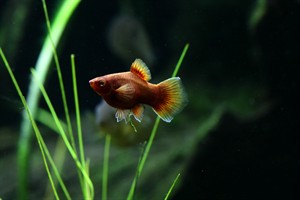 |
Livebearing fish such as the guppy and platy are mostly peaceful and brightly coloured. The female give birth to their young, which use dense plants – especially close to the surface – as a hiding place because the young get eaten. Some males fight over the females and the ones that lose also hide in the vegetation. Most livebearing fish eat algae and can potentially damage soft plants and moss. |
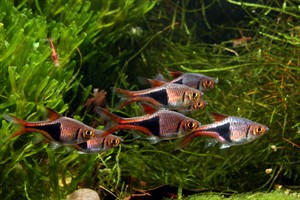 |
Shoaling fish such as tetras, rasboras and barbs, seek refuge in large groups known as shoals. Dense plants will give safety to the relatively few individuals (however, no less than 8-10 fish) you have room for. Plants with delicate leaves are often used for laying eggs and therefore offer exciting breeding potential. |
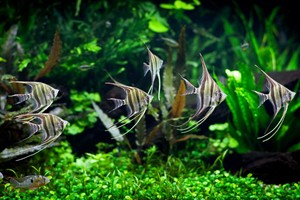 |
Community fish are fish that can share the aquarium with many other kinds of fish. Community fish comprise primarily of livebearers and shoaling fish, but if you rearrange the aquarium afterwards, it will be able to accommodate even more kinds of fish. Cichlids thrive if there are holes and hiding places, and gouramis and angelfish seek security amongst plants. |
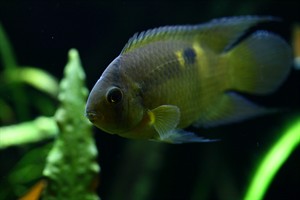 |
Territorial fish want to have their own space – either all the time or only when they are young. Cichlids and belong to this group. You can observe very exciting behaviour patterns when several pairs are put together in a planted aquarium so that the fish can establish their territory. |
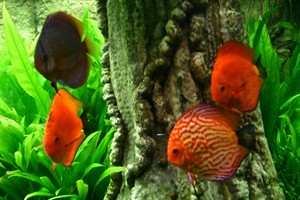 |
One out of many examples of fish that need higher temperatures are Discus. People often refrain from plants in Discus aquariums in order to facilitate the cleaning of the aquarium and the changing of water. If you want plants for our Discus, however, choose plants that grow naturally in places with high temperature. Cryptocoryne, Microsorum and Echinodorus are recommended. |
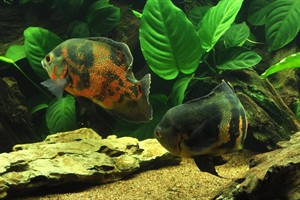 |
Digging and herbivorous fish including goldfish and some cichlids, and most algae-eating fish, eat moss as well. With plant-eating fish you can choose thick, tough leaves (such as Anubias) or plants with strong flavour such as Bacopa. Digging fish tend to get frightened by strong roots which must be mature before the fish are introduced! You can also cover the roots with stones or wood, which should keep the fish away. |
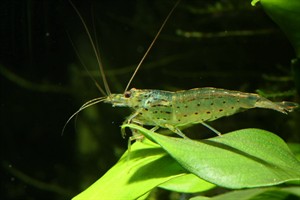 |
Algae-eaters, shrimps and snails are very popular, especially in the smaller nano aquariums. Shrimps in particular love moss. Many shrimp types are delicate, which is why Tropica has developed a plant series called 1-2-Grow! The plants are cultivated in a lab and are free from algae and pesticides. Shrimps are very good at keeping delicate-leaved plants such as Hemianthus, Marselia and Glossostigma free from algae whereas snails are perfect for large leaves, windows, stones and roots. |